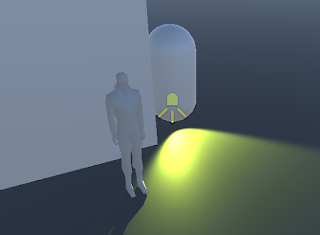Reading 06: Chapter First Draft
“A Predigital History of Games And Narrative”
By Matthew McConnell B00138902
The common agreed upon starting point for video games came in 1958, when an American physicist named William Higinbotham created a game called “Tennis for Two” on an old analog computer, like its more well known successor “Pong” it was played by two people controlling digital paddles hitting a small digital ball to and fro across the screen until one person had scored more points than the other. This one invention led to the creation of various arcade cabinets, game consoles and inevitably brought about the hugely popular gaming craze that has swept the world in the last two or three decades.
However, “Tennis for Two” isn’t the first example of people inventing an activity for the sole purpose of simple fun, in actuality, games have been played throughout the history of hundreds of different cultures throughout the world. For example, Tennis for Two was obviously based on the game Tennis, which can be traced back hundreds of years.
Tracing games back to their very origin can prove to be a daunting task as it seems that throughout all of human history children have found ways to entertain themselves, of course 2000 years ago without the option of Fortnite, kids would choose to run around and chase each other, which is a fun activity no matter where you are, be it Ancient Rome or modern Irish Primary Schools. This game has gone through many names, “chasing”, “bulldog” or as the americans would say “tag”.
Oftentimes the narrative of a game is what guides the rules, for instance, when a group of children play a game of tag, the narrative they base around it can change the rules of the game. If, say, the children decide to play a variant of the game tag originally titled “smee” in the 1930s but now commonly known as cops and robbers they will form teams and the “cops'' will have to catch the “robbers” and put them in “jail”, however the “robbers” can also tag their friends to help them escape from “jail”. This variant of tag has changed throughout history to fit with changing cultures and attitudes, for instance, in late 50’s to early 70’s America, the narrative was changed to be about Cowboys and Indians to match the current boom in popularity of western films.
One of modern gaming's most popular genres is the RPG (Role Playing Game), wherein a player takes the role of a character and depending on how they wish to participate in the narrative of the game will put points into various skills and attributes, suiting the character to how the player wants to interact with the world that the game creates. This form of video game takes inspiration from pre digital examples of RPG games where instead of having a computer to show the fantastical worlds and a digital system automatically telling the players where they were in the world, how much damage they took and how successful their actions were players would have to rely on another player , commonly know as a “Dungeon Master” to calculate the odds based on dice rolls and sheer imagination. The most famous of these early RPGs is the game “Dungeons and Dragons” which was originally published in 1974 by TSR (Tactical Studies Rules Inc.) and was created by renowned Game Designer, Gary Guygax.
Dungeons and Dragons as a game was itself inspired by a popular hobby amongst men in the early 19th century called Wargaming. Wargaming can be traced as far back as 1812 in Prussia when a Prussian nobleman named George Leopold von Reisswitz created a game called “Kriegsspiel” that was played on a tabletop and featured small coloured rectangular pieces meant to represent various troop formations that would be moved over a topographical map using rulers to simulate a realistic military battle. Kriegsspiel went on to be used by actual militaries throughout history as a way to teach up and coming generals various battle strategies. Wargames became more popular with mass culture in 1913, when H.G Wells, the author of the classic book “War of the Worlds”, began to play with and create rules for his sons toy soldiers, publishing his ruleset in a rulebook called “Little Wars”. This ruleset was later updated and improved over time, spawning different games based in different war settings with toy soldiers being replaced with highly detailed miniature soldiers which would be painted by players. The most popular of these wargames that can be found nowadays would be Warhammer 40,000 a game who’s narrative shys away from actual war and is set in a fantastical far future, published by the british game company Games Workshop. Warhammer has since been brought into the gaming medium on several occasions and the rulesets commonly used in most wargames can be found in multiple game genres, namely Real Time Strategy and Tactical Role Playing Games.
One of the earliest examples of wargaming can be found in what is probably the most famous game in the world, chess. Chess can be traced back over 1500 years ago in India, where a similar game called “Chaturanga” which then spread to Persia and most of southern Europe till it eventually took the whole world by storm, becoming the classic chess game we all love to pretend to know how to play.
In conclusion, gaming has gone through several evolutions throughout history, branching out and creating different narratives based on the cultures and interests of the people who played the games that have led us to our current digital gaming landscape.
Bibliography
Mathias Fuchs (2014). Rethinking Gamification. Leuphana University Lüneburg: meson press by Hybrid Publishing Lab. 119-140.
Daniel Hahn (2014). The Oxford Companion to Children's Literature. Oxford: Oxford University Press. Fighting Fantasy Chapter.
A. M. Burrage (1931). Smee. Middlesex: Victor Gollancz Ltd.
George Leopold von Reisswitz (1812). Kriegsspiel. Prussia: Wilhelm von Tschischwitz.




Comments
Post a Comment